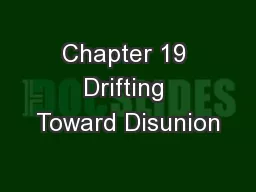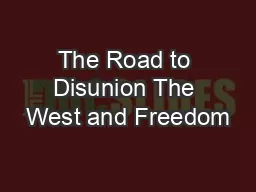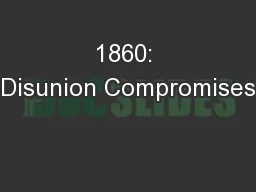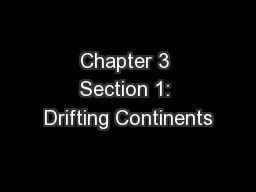PPT-Chapter 19: Drifting Towards Disunion
Author : celsa-spraggs | Published Date : 2020-04-04
More Issues in the 1850s Bleeding Kansas Incendiary Literature Uncle Toms Cabin BrooksSumner Incident Dred Scott Decision of 1857 Panic of 1857 John Brown Martyr
Presentation Embed Code
Download Presentation
Download Presentation The PPT/PDF document " Chapter 19: Drifting Towards Disunion" is the property of its rightful owner. Permission is granted to download and print the materials on this website for personal, non-commercial use only, and to display it on your personal computer provided you do not modify the materials and that you retain all copyright notices contained in the materials. By downloading content from our website, you accept the terms of this agreement.
Chapter 19: Drifting Towards Disunion: Transcript
Download Rules Of Document
" Chapter 19: Drifting Towards Disunion"The content belongs to its owner. You may download and print it for personal use, without modification, and keep all copyright notices. By downloading, you agree to these terms.
Related Documents














